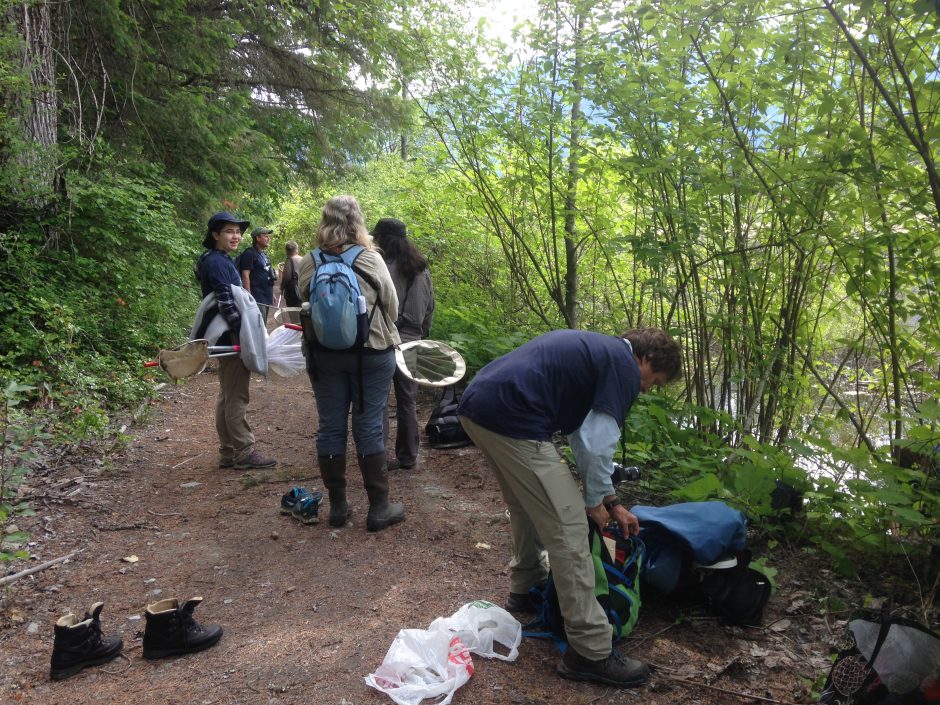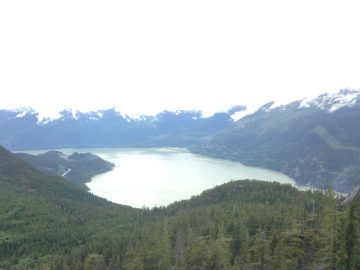
Chalk-front corporal dragonfly (Libellula julia) Photo credit: Sarah Yontez
Insects. Bugs. Creepy crawlies. Interested in the aforementioned arthopods? So is Karen Needham, the Assistant Curator of the Spencer Entomological Collection. She and a small team of entomologists travelled up to Whistler and Pemberton in early May to collect and record all that is class Insecta. Though the amount of insect collection was low due to the chilly weather, the Whistler and Pemberton bioblitz was a success.
It was Beaty’s fifth year attending Whistler’s bioblitz, which has been running for 11 years now. One of the things the host, the Whistler Naturalist Club, does for visiting scientists is transport them to different areas around Whistler they haven’t been to in previous years to collect and record specimens. Whether they’re collecting fungi or recording birds, each scientist has a different style when they bioblitz. Some stay close to the vehicle, while others will hike deep into the backwoods. Because Needham specializes in water insects, she focuses on finding bodies of water.

Photo Credit: Sarah Yontez
In Whistler Village, the majority of the water bodies are human-made. While these can be valuable for collection and research, as many don’t bother to look there, they aren’t as representative of the area as naturally formed waterscapes are. Pemberton on the other hand is an excellent place for that.

Photo credit: Sarah Yontez
Pemberton has a lot of water. There are wetlands, rivers, ponds, and lakes. The area has not been well documented insect-wise, so our entomologists had a blast catching and chronicling. A particularly interesting insect that can be found in that area is the caddisfly. The caddisfly adult is well known, but something that not many people know is what the caddisfly larvae look like and do.
The caddis larvae will create a case for themselves out of debris that lies around them for protection in the big, bad waters. The caddis can pop in and out of the casing, like a nervous turtle, to avoid predators. Most cases are unique enough to identify the genus without even seeing the larva.
If there are curious visitors wondering about specimen collection or what things live in their area, there is always a ‘cool finds of the day’ table set up at bioblitzes. In Whistler, it was set up at Alpha Lake park, where scientists drop off specimens and the public learned more about life in their city. Beaty’s entomologists drop off pre-made display drawers that contained the previous years’ finds to give curious visitors a clear sense of the diversity in the area.
No matter how specific or broad your interests are, a bioblitz covers it all when it comes to learning about life in your city.
Interested in joining a bioblitz and learning more about biodiversity? Check out the events calendar on the Bioblitz Canada’s website and on the Parks Canada website for ones near you.
